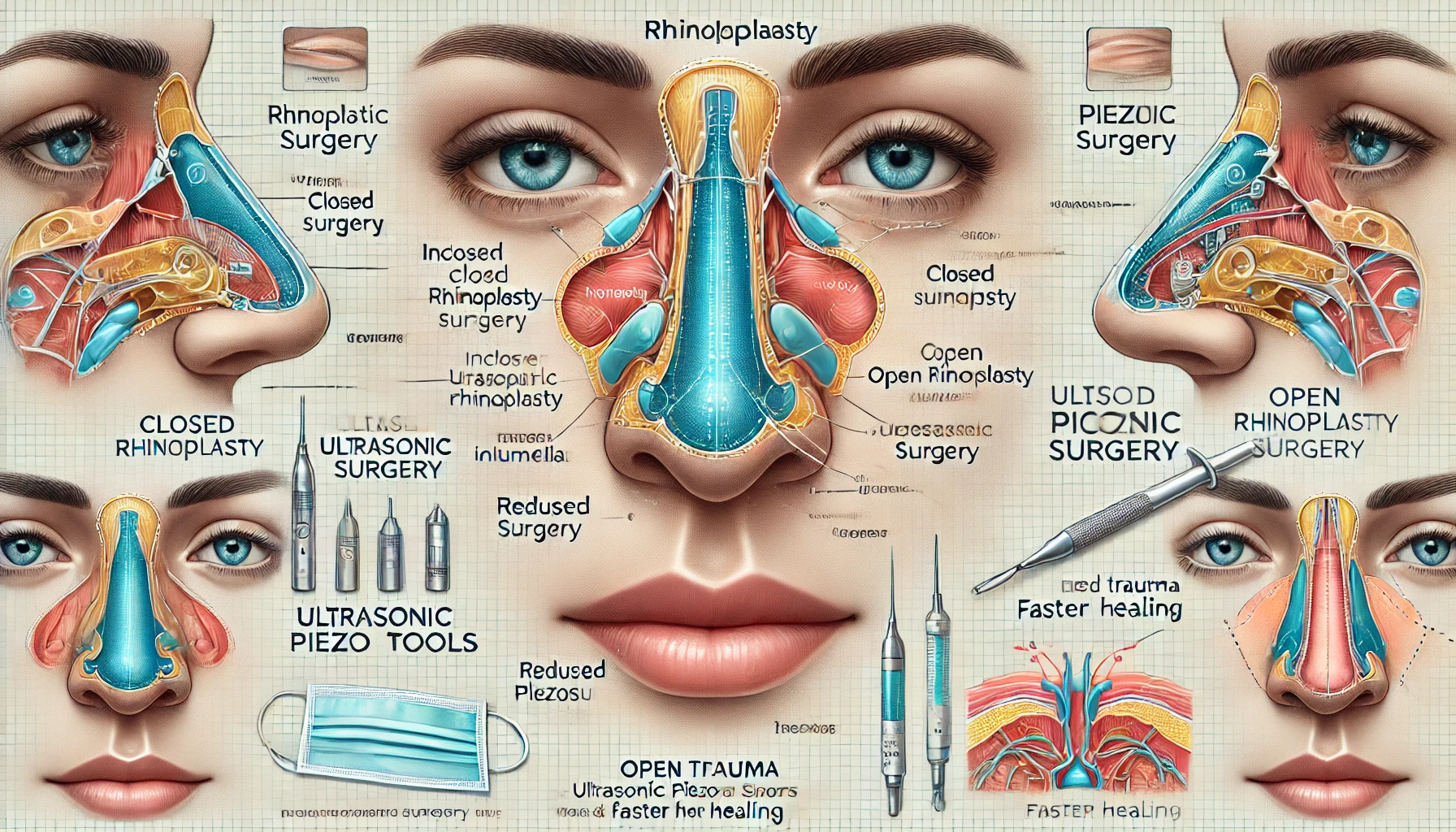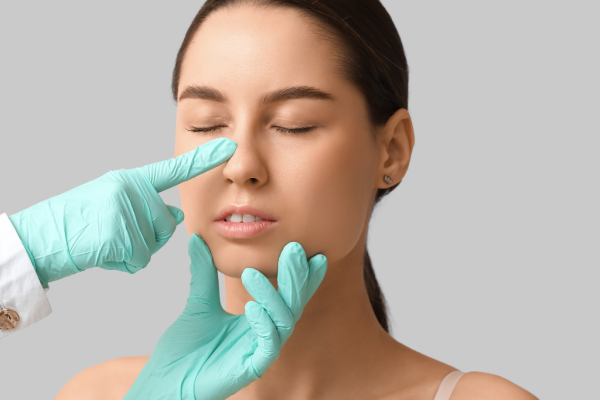All Rhinoplasty Techniques
Rhinoplasty Techniques
Rhinoplasty is a surgical procedure aimed at changing the shape and function of the nose. It can be performed for both aesthetic concerns and to alleviate breathing problems. In this article, we will examine rhinoplasty techniques in detail, discussing the advantages and disadvantages of each. Rhinoplasty surgeries can primarily be divided into closed and open techniques.
Closed Rhinoplasty Technique
Closed rhinoplasty is a method performed with incisions made inside the nostrils. It does not leave visible scars and generally has a faster recovery time. How is it applied? During closed rhinoplasty, the surgeon makes incisions inside the nostrils to shape the nasal bone and cartilage. This technique is usually preferred for minor changes. Advantages: No visible scars, shorter recovery time. Disadvantages: Limited field of view, may be challenging in complex cases.
Open Rhinoplasty Technique
Open rhinoplasty is performed with a small incision between the nostrils. This technique provides the surgeon with a wider field of view. How is it applied? During open rhinoplasty, an incision is made between the nostrils, and the nasal skin is lifted to work on the bone and cartilage tissue. Advantages: Wider field of view, more complex changes can be made. Disadvantages: May leave a small scar, longer recovery time compared to closed rhinoplasty.
Ultrasonic Piezo Surgery
Piezo surgery is a rhinoplasty method performed using piezoelectric devices. These devices cut only hard tissues while preserving soft tissues. How is it applied? Piezo devices use vibrational energy to cut and shape the nasal bones. Advantages: Less trauma, faster recovery time. Disadvantages: Requires high-cost equipment.
Secondary (Revision) Rhinoplasty
Secondary rhinoplasty is a procedure performed to correct the results of a previous rhinoplasty surgery. These surgeries are generally more complex and require more expertise. Why is it performed? It is done due to dissatisfaction with the results of the first surgery or complications. Technique and Challenges: Both open and closed techniques can be used. The difficulty level is higher due to the previously operated tissues.
Septorhinoplasty
Septorhinoplasty is a surgery performed to correct deviations in the nasal septum and change the shape of the nose. How is it applied? Procedures to correct the septum and shape the nasal structure are done simultaneously. Advantages: Can solve both aesthetic and functional issues simultaneously. Disadvantages: Can take longer in complex cases.
Post-Rhinoplasty Recovery Process
he recovery process after rhinoplasty depends on the type of surgery and the patient’s overall health condition. Post-Surgery Care: Resting for the first few days, keeping the head elevated, and applying cold compresses are important. Recovery Process and Considerations: Swelling and bruising usually decrease within a few weeks, but full recovery may take several months. Possible Complications: Complications such as infection, bleeding, and asymmetry can occur, though they are rare.
Choosing the Right Doctor for Rhinoplasty
Choosing an experienced and specialized doctor is extremely important in rhinoplasty surgeries. Importance of Experienced and Specialized Doctors: Experienced doctors reduce the risk of complications and help achieve more satisfactory results. For this reason, Assoc. Prof. Sema Koç, with 22 years of experience, performs rhinoplasty surgeries excellently. Considerations When Choosing a Doctor: The doctor’s experience, patient reviews, and references should be taken into account.
Preparation for Rhinoplasty
Preparing for rhinoplasty surgery is critical to achieving a successful outcome. Pre-Surgery Requirements: Health checks, detailed consultations with the doctor, and cessation of smoking and alcohol use. Operation Day Preparations: Wearing comfortable clothes and making arrangements that will facilitate post-surgery care. Post-Surgery Process Information: Information about the recovery process and post-surgery considerations should be provided.
Frequently Asked Questions About Rhinoplasty (FAQ)
Is Rhinoplasty a Painful Procedure? Since anesthesia is used during the surgery, no pain is felt. There may be mild pain after the surgery, but it can usually be controlled with painkillers.
Will There Be Scars After the Surgery? No scars remain with closed rhinoplasty; open rhinoplasty may leave a small scar, but it is generally not noticeable.
When Can One Return to Daily Life After Rhinoplasty? Daily activities can usually be resumed within 1-2 weeks. However, full recovery may take several months.
Rhinoplasty can be performed using different techniques and tailored to personal needs. It is important to consult with an experienced doctor to decide which technique is suitable for you. Techniques such as closed, open, ultrasonic, and piezo surgery each offer different advantages and disadvantages. For those considering rhinoplasty, having the right information and choosing the right doctor is key to achieving a successful result.
For more information about nose aesthetics and to schedule a consultation with Assoc. Prof. Dr. Sema Koç, you can contact our clinic.
Other Languages
Author





